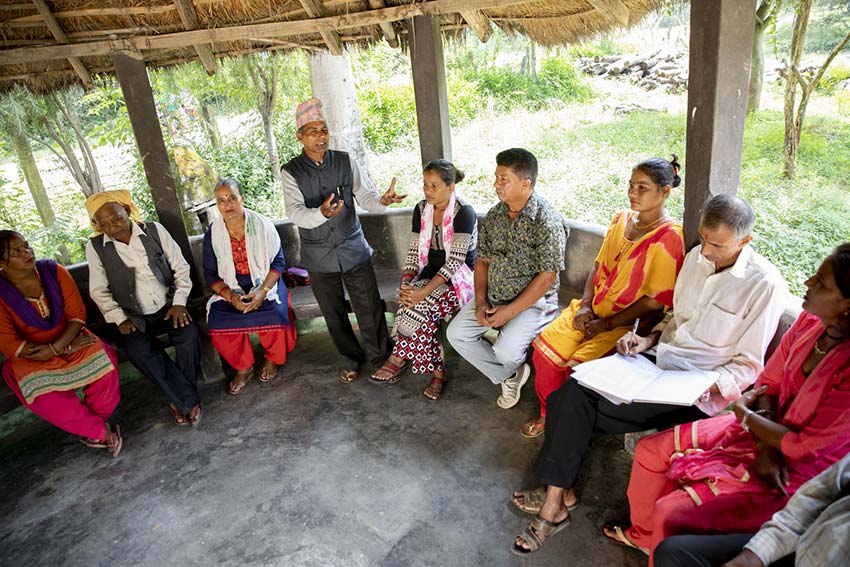
Photo Credit: Jessica Scranton/FHI 360
Development practitioners know that governance matters, but what is good governance and how can it be measured? FHI 360’s Good Governance Barometer (GGB) is a social accountability and development planning tool designed to bring together stakeholders, ranging from local government officials to community members, to jointly identify problems – such as improving the management of a health clinic – and determine the actions needed to resolve them. In addition, the GGB process produces action plans that strengthen and help measure the effectiveness and performance of local governance.
FHI 360’s Civil Society: Mutual Accountability Project (CS:MAP), funded by the U.S. Agency for International Development, partners with civil society and media organizations to foster an accountable, resilient Nepali civil society. The project team is using the GGB to achieve this goal.
Recently, we traveled to six villages in three rural districts in Nepal – Sindhupalchowk, Rukum and Gulmi – to learn how these communities are using the GGB to improve their public services and achieve this goal. Though the communities we visited were different, we saw some commonalities. Local officials often encountered service delivery challenges for reasons such as limited capacity or resources. When citizens and public officials were empowered to work together using the GGB, however, solutions were more likely to be identified.
For example, the GGB helped a community in western district Rukum recognize that some of their members, namely women and people with disabilities, faced barriers to accessing the health clinics. After identifying this problem, the community prioritized the need for disability-friendly structures and separate toilets for men and women.
In Gulmi, one farming community cultivates coffee, rice, millet and oranges, but only the wealthiest individuals had been receiving seeds. The GGB helped a diverse stakeholder group decide to organize a farmers committee to ensure the equitable distribution of the seeds. Now, the entire community is able to grow crops for sale or consumption.
In Sindhupalchowk, a village that was severely affected by earthquakes in 2015, the GGB helped the community to identify important deficiencies in the local education system. The GGB’s stakeholder group developed an action plan that resulted in five secondary schools installing machines to check the arrival and departure times of teachers and staff in response to complaints about absences. This new system significantly reduced teacher absenteeism. The stakeholder group also installed complaint boxes in the schools, which are reviewed regularly by a joint group of teachers, students and parents.
One of the GGB’s greatest strengths is its adaptability to different cultures and contexts. The GGB has also been used in Guinea, Mali and Senegal, where each country modified it to fit local needs. The tool enables communities, regardless of location, to better understand the root causes of service delivery challenges, identify common goals and develop plans to achieve them. Most importantly, the GGB supports efforts that are sustainable because they are locally owned and led.

Very informative, thank you